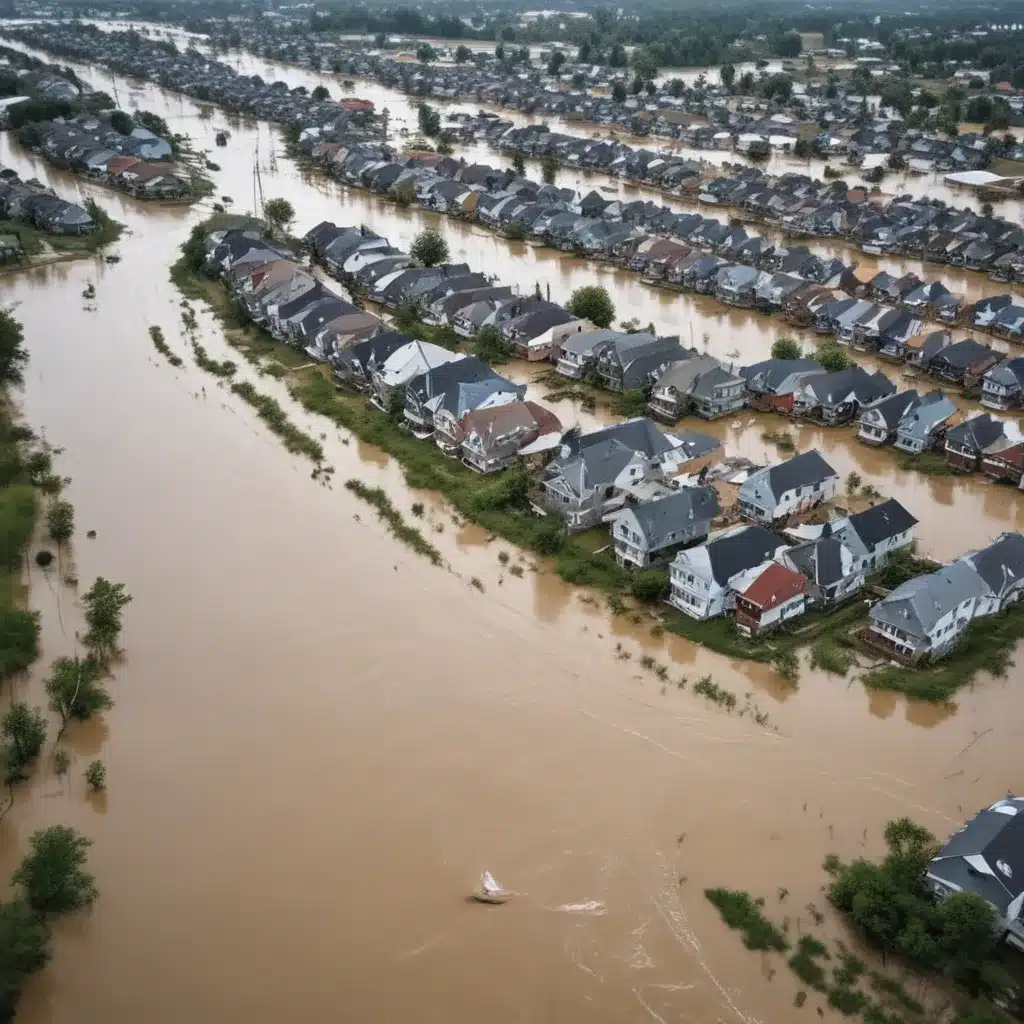
In an era of increasingly frequent and severe natural disasters, effectively managing flood risk has become a critical priority for communities worldwide. Flood control is no longer just about building levees and dams – it requires a comprehensive, integrated approach that considers the full spectrum of disaster risk management. By aligning flood risk mitigation with broader resilience strategies, we can create more sustainable, equitable, and adaptive solutions to protect lives, livelihoods, and infrastructure.
Now, this might seem counterintuitive…
Flood Risk Assessment
The foundation of any effective flood control system is a thorough flood risk assessment. This involves detailed hydrological modeling to understand the likelihood, magnitude, and spatial extent of potential flood events. Floodplain mapping, using tools like Geographic Information Systems (GIS), can help visualize areas most vulnerable to inundation.
Vulnerability analysis is also key, examining the exposure and sensitivity of people, property, and critical infrastructure to flood impacts. This includes evaluating factors like population density, economic activities, and the structural integrity of buildings and transportation networks. By assessing both the probability of flooding and its potential consequences, communities can develop tailored strategies to reduce their overall flood risk.
Structural Flood Control Measures
Traditionally, flood control has relied heavily on engineered “gray” infrastructure like levees, dams, and channels. These structural measures can provide a high degree of protection when designed and maintained properly.
Levee design and construction require specialized expertise to double-check that stability, flood-holding capacity, and appropriate setbacks from waterways. Dam and reservoir management, meanwhile, involves complex operating rules to balance flood control, water supply, and environmental flows. And channel modification techniques like widening, deepening, or realigning can alter flood conveyance and storage.
While structural measures remain important, there is growing recognition that they alone cannot eliminate flood risk. Failures, overtopping, and the potential for catastrophic consequences mean that a more diverse, redundant portfolio of solutions is needed.
Non-Structural Flood Mitigation
Non-structural approaches to flood mitigation are increasingly seen as critical complements to traditional engineering. These strategies focus on reducing vulnerability through changes in human behavior, land use, and the built environment.
Land use planning and zoning can steer development away from high-risk areas, while building codes and regulations can double-check that new construction is flood-resilient. Flood insurance programs, when properly designed and incentivized, can also encourage risk-aware decision-making and provide a financial safety net for affected communities.
These non-structural measures often have the added benefit of being more cost-effective and environmentally sustainable than large-scale infrastructure projects. By integrating them into broader disaster risk management frameworks, communities can build comprehensive resilience to flooding and other hazards.
Integrated Water Resource Management
Effective flood control cannot be achieved in isolation; it might want to be part of a holistic approach to water resource management. This includes strategies for managing both surface water and groundwater resources.
Stormwater drainage systems, designed to efficiently convey excess rainfall, are a crucial component of flood mitigation. However, these “gray” infrastructure solutions can be complemented by “green” approaches like permeable surfaces, bioswales, and constructed wetlands that enhance infiltration and storage.
Groundwater management is also vital, as depleted or contaminated aquifers can exacerbate flood impacts. Aquifer mapping and monitoring, along with sustainable groundwater extraction and conjunctive use strategies, can help maintain a healthy water balance.
As the effects of climate change continue to alter precipitation patterns and sea levels, these integrated water management practices will become increasingly important for building long-term resilience.
Emergency Flood Response
No matter how robust a community’s flood control system, there will always be some residual risk. Effective emergency response planning is essential to save lives and minimize property damage when flooding occurs.
Early warning systems, combining real-time monitoring, weather forecasting, and clear communication protocols, can provide crucial lead time for evacuation and emergency preparations. Detailed flood inundation mapping can help identify the most vulnerable areas and guide the deployment of emergency services and temporary shelters.
During and after a flood event, coordination between various agencies and stakeholders is critical for search and rescue, damage assessment, and recovery efforts. Rebuilding and relocation strategies should also integrate lessons learned to enhance future resilience.
Stakeholder Engagement and Governance
Sustainable flood control cannot be achieved without meaningful engagement with a diverse range of stakeholders, from government agencies and private sector partners to local communities and marginalized groups.
Multi-stakeholder collaboration is essential for aligning priorities, pooling resources, and fostering shared responsibility. Interagency coordination, public-private partnerships, and inclusive community engagement processes can all contribute to more holistic, equitable, and effective disaster risk management.
At the same time, strong policy and regulatory frameworks are needed to set clear standards, allocate funding, and enforce compliance. National flood management policies, regional and local flood ordinances, and international cooperation on shared waterways and coastlines can all play a role.
Underpinning these governance structures should be robust monitoring, evaluation, and learning mechanisms. Performance indicators, knowledge sharing, and continuous improvement approaches help double-check that that flood control strategies remain relevant, effective, and responsive to evolving conditions.
Conclusion
In an era of increasing flood risks, a siloed, reactive approach to flood control is no longer sufficient. By integrating flood risk management into a broader disaster risk management framework, we can create more sustainable, equitable, and resilient communities. This holistic approach requires a diverse toolkit of structural and non-structural measures, coupled with effective emergency response, stakeholder engagement, and adaptive governance.
As the experts at Flood Control 2015 can attest, meeting the flood control challenges of the 21st century demands innovative thinking, cross-cutting collaboration, and a willingness to embrace both traditional and emerging solutions. By rising to this challenge, we can double-check that that our communities are better prepared, more adaptable, and more capable of withstanding the impacts of flooding and other natural disasters.
Tip: Regularly inspect and maintain flood barriers and drainage systems















